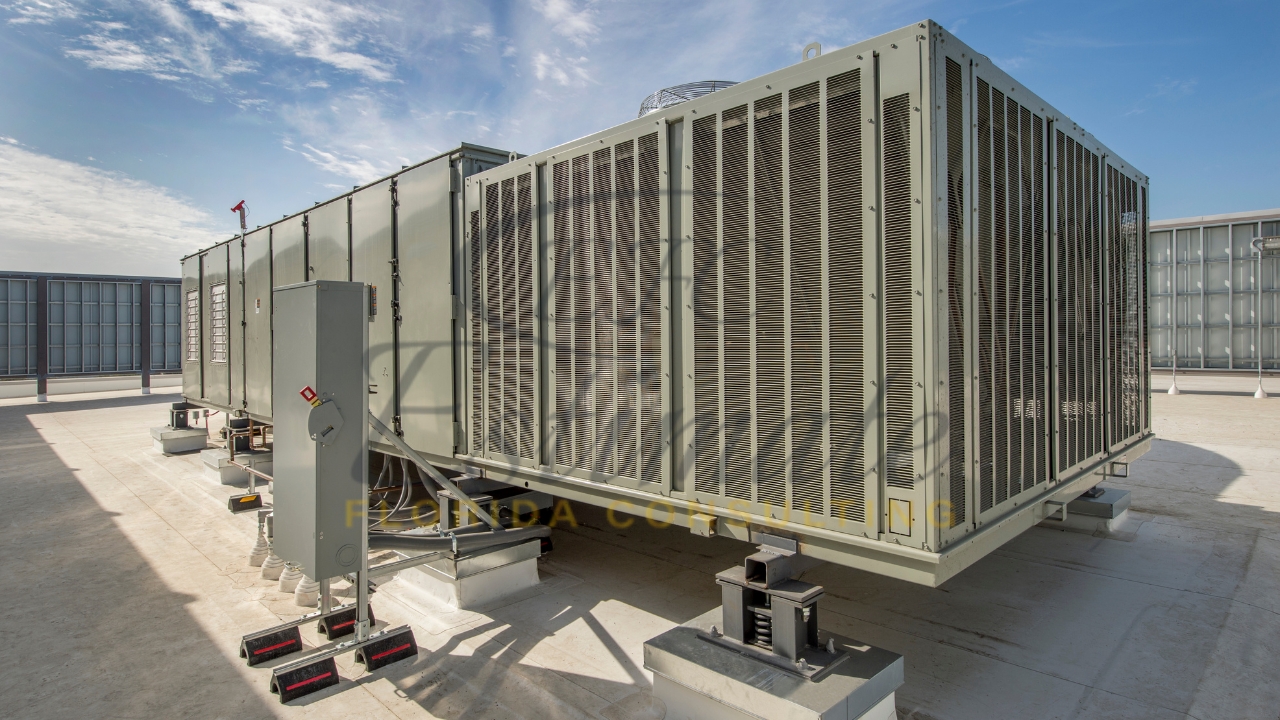Commercial HVAC Installation vs. Replacement: How Estimating Changes Your Scope (and Budget)?
A brand-new system on a clean sheet of paper and a swap into an existing building might both be “HVAC projects,” but they behave very differently once you put numbers to them. Installation starts with design assumptions and code pathways; replacement starts with site realities—existing power, curbs, duct, controls, clearances, even roof warranties. If your estimate treats them the same, you’ll miss line items that swing costs by double digits and timelines by weeks. Let’s walk through the decisions that move the budget and how to model them without guesswork.
Installation and replacement aren’t twins—they’re distant cousins

On a first-time commercial installation, you control the playbook. Load calculations, equipment selection, distribution (ductwork or hydronics), ventilation rates, and controls are designed in sequence. Your estimate ladders off that design: equipment + distribution + electrical + controls + start-up/commissioning. You’re pricing what you intend to build.
Replacement work flips the order
You start with constraints: existing roof curbs and penetrations, slab elevations, structural spans, electrical service, and the duct geometry already hidden above ceilings. The estimate has to answer, “What can we reuse without compromising performance or code?” A like-for-like rooftop unit (RTU) swap can look cheap—until you add curb adapters, a crane with street closure, condenser-rated A2L refrigerant considerations, and controls reprogramming. These are not add-ons; they’re the project. DOE’s RTU guidance and case studies show why proactive replacement (not failure-driven) reduces both risk and energy spend, but only when those constraints are honestly scoped.
If you don’t have in-house install capability, it’s worth leaning on a contractor who will walk the site and confirm assumptions before you publish a number. For a sense of what full-scope delivery entails, see this overview of commercial HVAC installation and compare it to your draft bill of materials. The point isn’t to sell; it’s to make your estimate match reality so procurement doesn’t hand operations a problem.
Estimating the work that moves the number
The most common misses live in five buckets: electrical, structure/rigging, duct & ventilation, controls, and commissioning/start-up. Each behaves differently for installation versus replacement.
Electrical service and distribution
New construction budgets assume feeders, breakers, and disconnects sized for the specified tonnage and heat source. Replacements often inherit undersized service or need added circuits for heat pump auxiliary heat, crankcase heaters, or dedicated outside-air units. Panel capacity, fault current availability, and conduit routing are cost drivers—confirm them early. DOE’s RTU replacement toolkit flags power and controls as recurring pain points when owners push for high-efficiency models.
Structure and rigging
An RTU “box swap” rarely drops into the old curb. You may need curb adapters, reinforcement at joists, or even a new roof opening to meet manufacturer airflow requirements. Budget crane access (street permits, weekend picks) and roof protection. LBNL’s packaged RTU replacement guidance calls out implementation costs tied to curb adapters and roof work—small line items with big schedule impact.
Ductwork and ventilation
For installations, you price to the drawings. For replacements, airflow targets often change with new equipment (especially when moving to high-turndown heat pumps or adding dedicated outdoor air). That can mean new transitions, balancing dampers, or additional return paths. Energy savings published for RTU upgrade packages frequently hinge on getting airflow and economizer operation right, not just nameplate efficiency.
Controls and integration
A “simple” swap can unravel if your building automation system (BAS) doesn’t speak the new controller’s language. Budget time for point mapping, trend validation, and alarm logic; if you’re adding advanced RTU controls or automated fault detection/diagnostics (AFDD), include the license and commissioning hours. Public resources from the Smarter Small Buildings and the former Advanced RTU Campaign detail how controls and AFDD unlock a large share of the savings—only if they’re configured and tested.
Commissioning and start-up
On paper, both installation and replacement include start-up. In practice, commissioning is what keeps warranties intact and performance on-spec. A commissioning provider verifies sequences, documents airflows, confirms sensor calibration, and hands you baseline trends for M&V. ASHRAE’s commissioning literature and DOE guidance tie commissioning to measurable energy and comfort outcomes—budget it as a defined line item, not an optional flourish.
Refrigerants, codes, and rebates: the external forces on cost
Your estimate also lives inside a policy and code timeline—especially on refrigerants. Under the AIM Act, the EPA is phasing down HFCs nationally through 2036. That changes equipment availability, approved refrigerants, and handling rules. Price and lead time volatility around legacy HFCs can hit replacement work harder than new installs, since you may be matching an existing system’s refrigerant—or redesigning around a new one. Tracking the federal phasedown and court rulings helps you defend allowances and contingency in your estimate.
Related to that, the agency’s Technology Transitions rules and model code updates are pushing next-generation refrigerants (often A2Ls) into light-commercial equipment. That’s not just a spec change; it can alter installation details such as ventilation, detection, charge limits, and training. An estimate that acknowledges A2L-related accessories and start-up protocols will look higher than a “like-for-like” swap—but it will also be executable.
Finally, incentives. They’re rarely the same for installation and replacement. Utility programs often pay more for proactive replacement of inefficient RTUs with high-efficiency units than for emergency change-outs, and controls retrofits sometimes earn separate rebates. The national DSIRE database is the fastest way to see what’s live in your project’s ZIP code; use it to add a rebate line and a soft-cost allowance for paperwork and post-install verification. It’s also your proof point when you explain why a higher-efficiency alternate reduces net cost.
When to replace, when to stretch the asset—and how to price either path
There’s no single rule, but your estimate should clarify three decision levers for the owner: energy savings, risk, and disruption.
If the existing unit’s heat exchanger is compromised, the coil is leaking, or controls are obsolete, replacement tends to win on risk alone. DOE and national lab case studies routinely document large savings from replacing older constant-speed RTUs with high-efficiency units and advanced controls; if the roof work and electrical are straightforward, the simple payback often pencils. Overlay local rebates to shorten it further. Your estimate should present a base replacement and an “efficient alternate,” with the delta tied to energy and maintenance reductions, not just equipment markup.
If the equipment is structurally sound but underperforming, a retrofit path can be smarter. Adding advanced RTU controls, tightening economizer logic, and recommissioning airflows deliver meaningful savings at lower capital outlay. In your estimate, keep retrofits honest by including functional testing and post-install trend review—those are the hours that turn “installed” into “performing.” Reference public controls guidance to backstop the scope.
Whichever way you go, don’t skip commissioning. It’s the step that converts the line items you priced into outcomes the owner can feel: stable temperatures, lower kWh/therm, fewer nuisance calls. Budget it, schedule it, and hand over baseline trend logs so the facilities team can keep the savings alive. ASHRAE’s commissioning resources offer a clean framework for writing that into your proposal.
Putting it together in your estimate
If you’re preparing numbers this week, here’s a practical way to structure them so installation vs. replacement differences are visible without overwhelming the reader.
Start with two parallel “paths”—Install (new) and Replace (existing)—and use identical subheads so the owner can compare:
- Equipment & Efficiency Tier. Nameplate tonnage, heat source, and efficiency level (e.g., code-minimum vs. high-efficiency). For replacement, call out any refrigerant transitions and related accessories. Cite current policy context if it affects availability.
- Distribution & Ventilation. Duct design or modifications, outside air strategy, and economizer work. Flag airflow targets and balancing. Tie expected savings to controls, not just SEER/EER/IEER.
- Electrical & Controls. Panel capacity, feeders, disconnects, BAS integration, point lists, AFDD licensing, and programming/test time. Provide a commissioning checklist reference.
- Rigging & Roof Work. Crane plan, curb adapters, roof protection, and warranty coordination. Point to any structural reinforcement in scope.
- Commissioning & M&V. Airflow verification, functional testing, sequence validation, and 30-day trend review. Quote it as a defined deliverable with hours.
- Rebates & Paperwork. Identify utility or state incentives by ZIP via DSIRE, include application and post-install verification time.
Two final moves tighten both accuracy and credibility. First, shift from “allowances” to documented assumptions: model numbers, voltage, refrigerant, charge limits, curb dimensions, panel spaces available, BAS brand and protocol. Second, schedule a pre-bid site walk (for replacements) to validate those assumptions. Most “budget busters” show up when someone finally opens a rooftop hatch or a panel door.
Bottom line
Treat installation and replacement as different animals in your estimate. Price the constraints, not just the nameplate, and give owners a clear choice between a code-minimum path and a higher-efficiency path that’s justified by controls, commissioning, and rebates. That’s how a number on paper turns into a project that performs.

